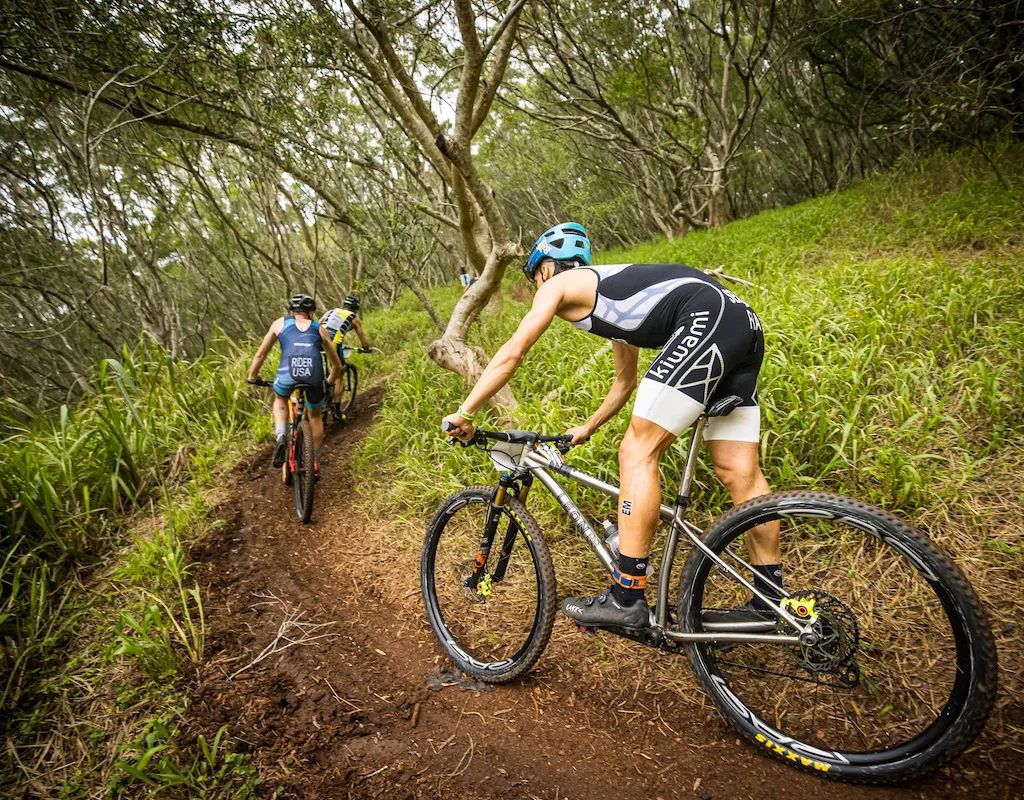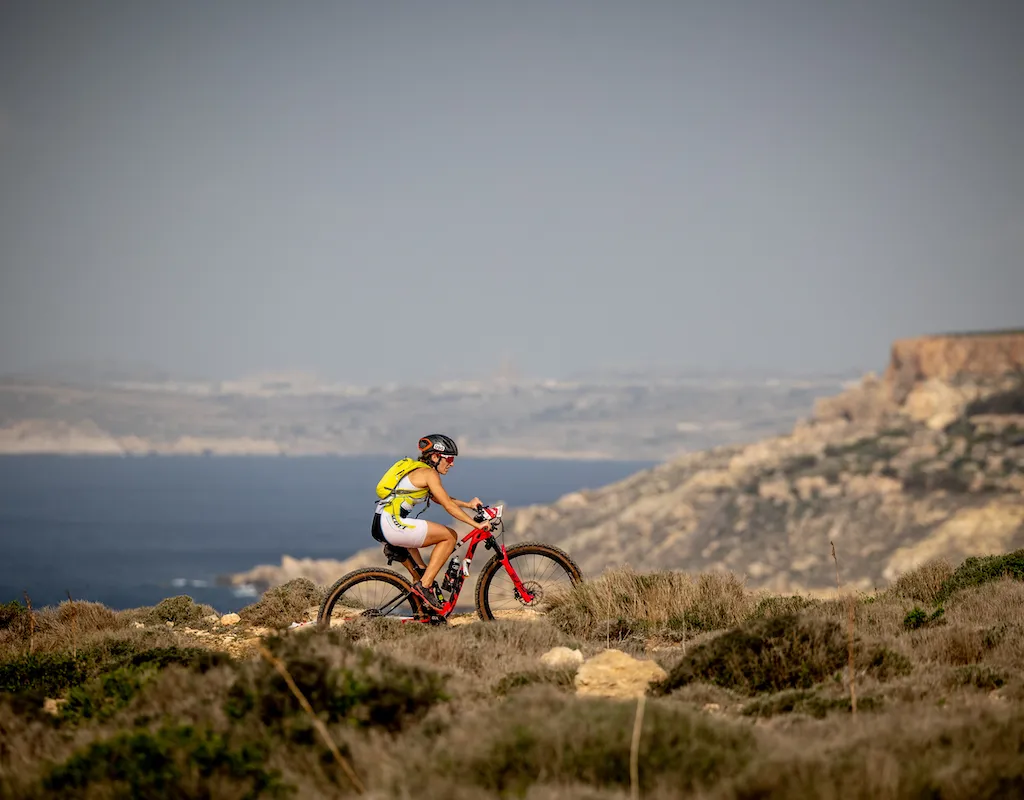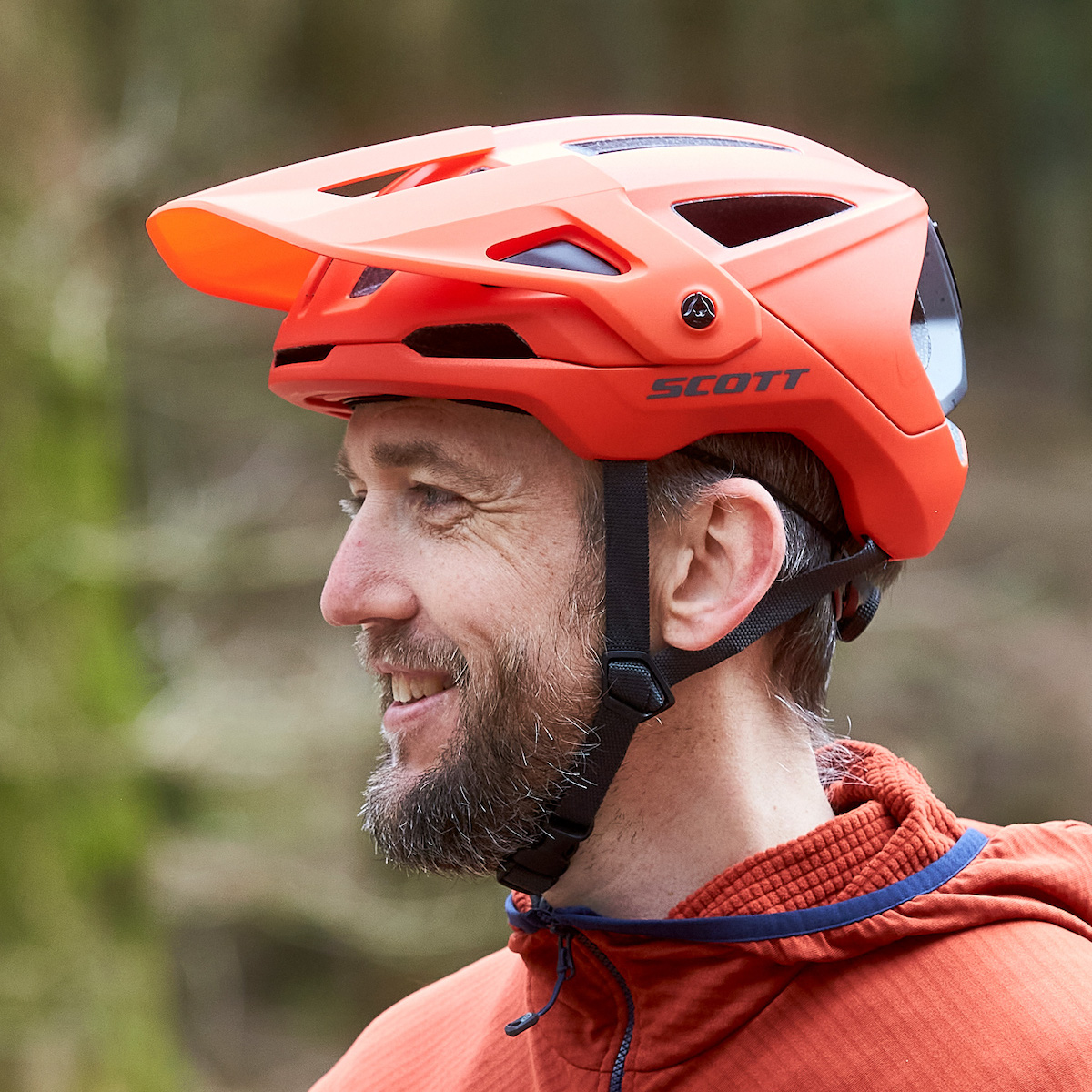Off-road riding isn’t for everyone. You’re going to get muddy (in the UK, at least), you’re going to crash regularly when starting out (at least the landing is generally softer than on the road!) and you’re going to need some new kit to get the most from your rides. The benefits are myriad, though.
You can explore the countryside in peace, without having to worry about close passes and queues forming behind you; not only will your leg muscles get a workout, but so will your upper body, as you wrestle your bike over rocks and roots; plus, you’ll be stood up out of the saddle more, which will work different muscles.
Your skills will improve, too, as you learn to tackle different trail surfaces and features, giving you more confidence when you head back to the tarmac.
Mountain biking or gravel riding are great activities to try during the off-season, when it can be hard to stay motivated and put in the miles.
At this time of year, the woods are much quieter than the roads, and if you head to one of the UK’s many dedicated trail centres, you’re assured of a weatherproof surface, waymarked routes and amenities such as a cafe, showers and bike wash.
Yes, you’ll probably get dirty, but splashing through puddles under the shelter of the trees is a lot more fun than pedalling into driving rain on the tarmac or spinning life away in your garage. So, let’s look at how you can get the most out of taking your bike training off-road this off-season…
10 ways to master riding off-road
From choosing the right gear to resetting your expectations, here’s our complete guide to riding safely and efficiently off-road this off-season…
1. Pick the right bike

For gentler trails, a gravel bike is ideal – essentially a beefed-up road bike with more stable geometry and wider, knobblier tyres. Many come with some form of suspension, and with a choice of drop or flat handlebars.
For more comfort and control on rougher terrain, mountain bikes (MTBs) have even more confidence-enhancing geometry, bigger – and thus comfier and grippier – rubber and more sophisticated suspension.
A hardtail (MTB with no rear suspension) is a good option for those starting out; full suspension improves grip and control, but adds cost and complexity.
2. Check the spec
Most modern gravel bikes and MTBs will have the basics covered – a reasonably light alloy or carbon fibre frame, a 1 x 11 or 1 x 12 drivetrain and hydraulic disc brakes.
Things to look for include decent tyres (check the rubber compound and casing construction as well as the tread pattern) and, in the case of mountain bikes, a reasonable quality fork and/or rear shock.
Cheaper suspension units are often flexy and poorly-damped, so feel uncontrolled.
3. Buy the correct size
A bike that fits you properly will be much more fun to ride, which will help you stay motivated. Don’t just go by the manufacturer’s size recommendations. Equally, don’t automatically opt for the same size as your road bike. Go on some test rides to see what suits you best.
4. Do this session:
To build short-duration power, ride for 60secs at near-maximum intensity. Allow 6mins to recover, then repeat. Do six of these intervals in total. You can also include intervals that target VO2 max in your rides.
A good session involves 4 x 6min intervals at 102-108% FTP (8/10 effort), with roughly 4mins of recovery. As you get better at this session, you can add a 30sec hard start at the beginning of each effort (120-130% FTP, 9/10 effort) to lift your oxygen consumption and heart rate more rapidly.
Improved short-duration power will help with sprints and climbs in triathlons.
5. Reset your expectations

You may be used to long road rides, but that doesn’t mean riding off-road will be easy. Rougher terrain, unwanted suspension movement (‘bob’) and tyres with higher rolling resistance all make the going slower, while the need to maintain grip requires more variation in pedalling power, timing and cadence.
Off-road riding also involves more time out of the saddle, allowing the bike to move around beneath you, and more frequent acceleration and deceleration as climbs tend to be shorter and punchier.
6. Set the bike up right
Don’t pump the tyres up too hard – lower pressures will boost grip and comfort. Aim for 20-40psi on a gravel bike and 15-30psi on an MTB, depending on your weight, tyre size and the trail conditions.
As a rough guide, start at 25/35psi and tweak until the tyre conforms around small roots and rocks, rather than glancing off them, but doesn’t squirm in corners or puncture easily.
You may need to raise or lower the handlebar to help ensure your weight is well-balanced between the wheels on descents.
7. Dial in the suspension

A fork (or shock) needs to compress, absorb bumps and extend, to smooth out dips in the trail. Setting it up so it sags under your weight will ensure it keeps a little travel in reserve for this.
Brands give a recommended air-spring pressure, based on rider weight, which should put the sag in the right ballpark (15-20% for a fork, 25-30% for a shock). Increasing the sag will improve smoothness but can introduce suspension wallow, reducing pedalling efficiency.
Try different rebound damping (a red dial) and lockout/climb-switch (a blue lever or knob) settings to find out what suits you.
8. Get some off-road kit…
Mountain bikers don’t tend to wear Lycra, partly for fashion reasons, but also because it rips easily. Most opt for padded liner shorts under casual-looking riding shorts or pants, paired with a relaxed-fit jersey.
Helmets generally have peaks, again partly for style points, but also because they keep errant twigs out of your face. Knee pads are de rigueur for most MTBers. Gravel riders tend to dress somewhere in between.
9. …Or at the very least, some pedals
One thing you can’t use off-road is road pedals and shoes. You’ll need footwear with some grip, and pedals that shed mud better and are easier to use. Some mountain bikers use ‘flat’ pedals, which rely on sharp pins and a concave platform to hold your feet in place.
If you’re happy using clipless/clip-in pedals, then there are plenty of off-road options available. Try to keep the pedals level over rough terrain, to avoid clipping obstacles.
10. Stay safe!
Mountain and gravel bikes have confidence-enhancing geometry, effective suspension and powerful brakes. But add human error, changeable trail conditions and hidden dangers to the equation, and the odd spill is inevitable.
Thankfully, most happen at low speeds and on relatively soft surfaces. Still, wear a decent helmet and pads, have a phone with you and make sure someone knows where you’ve gone.
Now, put that to the back of your mind and get out there and enjoy the trails!
Top image credit: Getty Images
